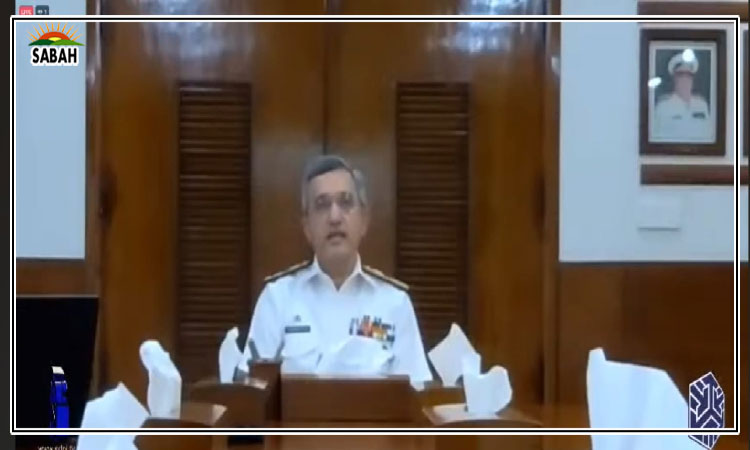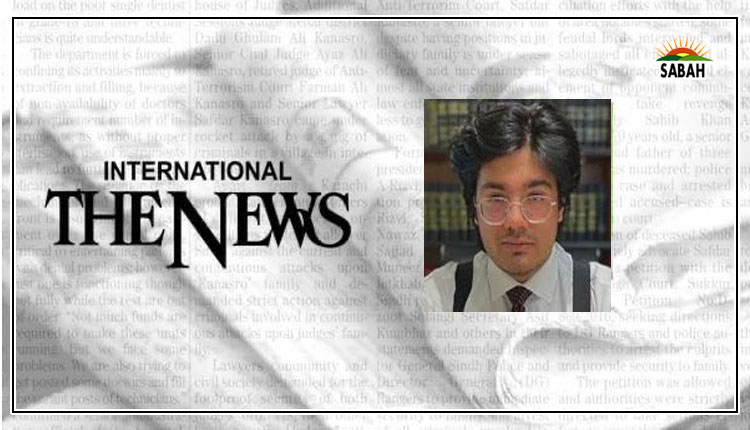Justice in the trenches…Salar Rashid
The room is swollen with heat. Clients and lawyers alike wait impatiently. The fortunate sit on creaky wooden chairs; the less fortunate linger near the entrance or press their backs against the walls. Beads of sweat roll down the judges face. A fan whirls noisily overhead a poor substitute for the broken AC unit, its grill long having vanished. A lawyer gestures animatedly to the empty space beside him. His counterpart is nowhere to be seen.
The opposing lawyer finally swaggers in. Two juniors ties hanging loosely, coats in dire need of dry-cleaning trail behind. No admonishment or reprimand is issued. Instead, the judge suppresses the rush of irritation, keeps his face carefully blank, and nods in greeting. He cannot afford to earn the ire of the Bar, not with his ACR due soon. The lawyer offers no explanation beyond an insincere, one-word apology. Slowly, he produces a file from his briefcase as he begins. The charade begins.
While much ink has been spilled on the matter of the Supreme and high courts, the practical benefits of these analyses are blunted by one simple fact: the vast majority of adjudication takes place not in Courtroom No 1, but on desks overflowing with paper in the lower courts. How can the system function well if seemingly insurmountable issues continue to plague them?
Let us first acknowledge that deep mistrust exists between various elements of the judiciary, from the greenest civil judge all the way to the Supreme Court. The higher you are on the totem pole, the more burdened you believe yourself to be with correcting the mistakes of those below. The lower you are on the totem pole, the more convinced you become that those with supervisory authority over you are completely detached from ground realities, unused to hard labour. Both these perceptions are, naturally, stained with biases accumulated over years of operating in very different physical and mental spaces. But neither perception, respectfully, is without some merit.
Consider the reality of the environment lower courts operate in.
Lower courts have consistently struggled to push back against the tide of a truly immense case burden. Despite an increasing number of resources allocated to them and the improved training methods introduced over time, many fundamental problems persist. Justice Mansoor Ali Shah, speaking at a conference at IBA earlier this year, put it quite bleakly: We have some four thousand judges, whereas we need [five times that] to meet international standards.
In simpler words, we have 60,000 citizens to each judge. Across the border, theres a judge to each grouping of 48,000. European countries, naturally, operate at much more efficient levels Greece with 3,500 per judge, Germany with 3,800. While comparisons to them are unmerited for obvious reasons, its probably worth mentioning that Ireland, with the worst ratio in the EU, has it twice as better than Pakistan.
Think of it this way. Even an exceptional judge, blessed with preternatural mental fortitude and capacity, cannot act as a substitute for four of his/her kind. The system is primed not to produce judgments of quality and depth, but to force judges to dispose of cases as quickly as they can. This inevitably leads to a cycle of appeals and reconsideration at higher levels the system gets clogged further, and justice hovers out of reach.
Unfortunately, many analyses consider this merely a function of inadequate resources. It isnt. We do lower courts a great disservice in how we refer to them. The term subordinate courts not only ignores the immense role they play in deciding the fates of millions of cases, but its use should challenge our conception of judicial independence. Consider the administrative control the high courts have over the lower courts. Is independence merely that of freedom from influence external to the judiciary, or is it also freedom from their own ilk? Or do our sensibilities not prickle when we see a judge deciding cases not according to his conscience but with the consciousness of those that stand above him in the judicial hierarchy?
Even if our lower courts operated at an unrealistic level of efficiency, their sheer caseload would invariably lead them to judge wrongly in a significant number of cases, and thus weaken the legitimacy of their judgments. Is it not a shame that they have become but the first steppingstone to a litigant reaching a judgment of their liking? Yes, the right to appeal goes hand-in-hand with rule of law. It is a necessary element of a system thats armed its judges with vast discretionary powers, but the reality is that litigants know all too well that whatever the lower courts decide, there is always a judge above them who may be willing to look at things differently, regardless of whether its merited or not.
The story only gets more tragic when we consider the difference in induction methods for lower courts versus high courts, and the nigh-unbridgeable differences they breed in mindset, skill, and outlook.
The eligibility requirements to become a judge in the lower courts fundamentally differ from those of the high court. Two years of experience and a high court license are all you need to be eligible to sit the Civil Judge exams. Passing the exam itself is not particularly difficult, where aspirants can make do with rote learning and some grasp of language, civil and criminal law, and general knowledge.
What they are being tested for is their ability to grasp the routine and reproduce it, not for intellectual rigor or the depth of their understanding. More distressing is that, as late as 2020, a 50 per cent aggregate was considered a qualifying mark by the Lahore High Court. In other words, an aspirant with no understanding of half of what they were being tested on could still don the robe and decide the fates of the thousands that appear before them.
Consider the indirect effect of inadequate training and judicial interdependence of the lower courts on the higher judiciary. The high courts and Supreme Court have made it a routine matter to delve into factual disputes that should have been conclusively addressed earlier. The trial cannot be re-conducted, and to correct these factual oversights, the law is twisted into peculiar shapes. To wit, a misapprehension of facts becomes a misinterpretation of the law.
The problem, frankly, isnt merely one of a lack of technical know-how, but a missing appreciation for the systems that yield justice. In conversation with a judge who had recently dispensed with a criminal matter, I was told that lawyers need to coach their witnesses better. There is a fine line between preparation and coaching, and what the judge was referring to belonged almost entirely to the latter.
Finally, consider perhaps the most debilitating impediment to the proper functioning of the lower courts their emasculation at the hands of empowered, entitled bar associations.
Lawyers routinely fail to appear before lower courts, plead cases that, on bare reading, are unmaintainable, and shamelessly flout rules and procedure. Cases that should be thrown out on day one linger till the lawyers fees seem justified. Adjournments are granted without an end in sight. Redundancies are baked into the system to account for lawyers ill performance. Reprimands or consequences are not issued out of fear.
Where procedure clearly dictates a certain course of action, lenience is granted in the name of restraint. If judges push back, their colleagues convince them otherwise. If they refuse to back down, lawyers cry havoc and let slip the dogs of war chambers are locked, litigants are pushed away, and strikes continue till the judges relent. By no means are the High Courts immune to the Bars influence, but their greater stature and authority shields them from much of the day-to-day entitlements that twist and warp the lower courts.
The fact is that high court judges are nominated primarily from the pool of eligible lawyers, not from the subordinate judges. Judges in the lower courts have, by and large, spent most of their careers as judges first, and thus look at the world through a judges perspective. On the opposite end of the spectrum, high court judges carry with them much of the same biases they had as lawyers. Is it any surprise, then, that lower courts are often found without requisite support from their superiors?
If we want our judicial system to perform to our expectations, it is time we start re-evaluating the biases baked into our worldview. The lower judiciary is where justice begins; lets make sure it doesnt also end there.
The writer is a student of law at Kings College London. He can be reached at: salar.rashid@kcl.ac.uk
Courtesy The News












